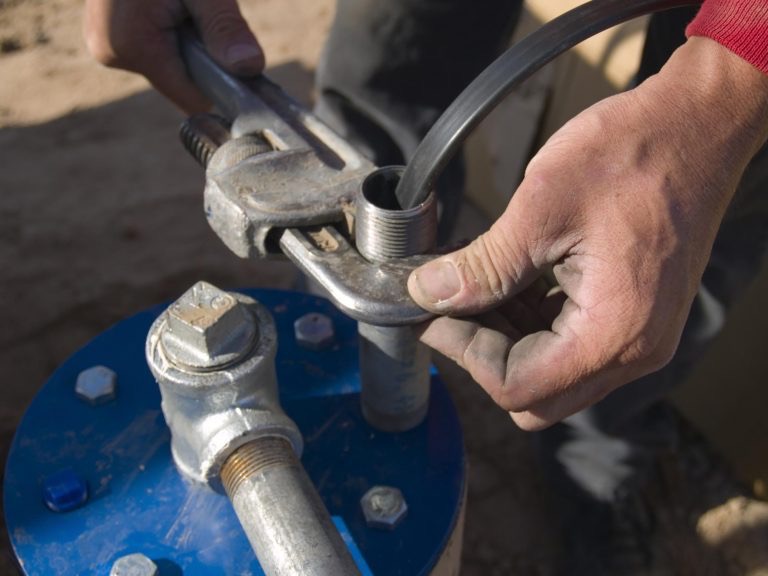For many rural communities, private wells are not just a convenience—they are a lifeline. Unlike urban areas that rely on municipal water systems, rural households and farms often depend on wells as their sole source of clean and reliable water. From drinking and cooking to farming and livestock care, wells provide the daily supply that sustains both homes and livelihoods.
But wells, like any other system, require maintenance and repairs to function properly. When problems arise, they don’t just disrupt water flow—they impact health, productivity, and quality of life. Understanding the signs of well issues, the benefits of timely repair, and the risks of neglect is crucial for ensuring rural communities continue to thrive.
What are the Common Signs That a Well Needs Repair in Rural Areas?
A well doesn’t suddenly stop working without warning. Most of the time, issues build gradually and show clear signs if homeowners know what to look for. Recognizing these warning signals can save rural families from costly repairs and dangerous health risks.
1. Low or No Water Pressure
A sudden drop in water pressure is one of the most common signs of well trouble. This could mean a failing pump, clogged pipes, or problems with the pressure tank.
2. Air Bubbles or Sputtering Faucets
If water spits or sputters when the faucet is turned on, air may be entering the system—often caused by pump or pipe issues.
3. Strange Tastes or Odors
Water that smells like rotten eggs or tastes metallic could indicate contamination, bacterial growth, or mineral buildup inside the well.
4. Dirty or Cloudy Water
Clear water is essential for safety. Murky or gritty water often points to sediment intrusion, failing filters, or a damaged well casing.
5. Unusually High Electric Bills
If the pump is struggling to maintain water flow, it runs longer and uses more energy. Rising electricity costs may be a hidden sign of well inefficiency.
6. Loud Noises from the Pump
Grinding, humming, or rattling sounds suggest mechanical failure or loose components in the pump system.
7. Complete Loss of Water
The most obvious sign is a total lack of water flow. This could stem from pump failure, electrical issues, or even a dry well.
For rural households, these signs should never be ignored. Early repair can prevent complete system failure and ensure the household’s water supply remains safe and reliable.
How Does Well Repair Improve Water Flow and Quality in Rural Communities?
In rural areas, a dependable water supply is not just about convenience—it’s about survival and productivity. Well repair directly improves both water flow and quality, making it one of the most important services for these communities.
1. Restores Steady Water Flow
Repairing pumps, pipes, and pressure tanks ensures water flows at consistent pressure. Families no longer have to struggle with weak trickles or interrupted supply.
2. Reduces Sediment and Contaminants
Well repairs often involve replacing casings, sealing cracks, or fixing filtration systems—all of which prevent contaminants like dirt, bacteria, or chemicals from entering the water supply.
3. Enhances Drinking Water Safety
A repaired well helps eliminate foul odors, strange tastes, and microbial risks, ensuring families can drink and cook with confidence.
4. Protects Appliances and Plumbing
High mineral content or sediment from a failing well can damage household appliances like dishwashers, washing machines, and water heaters. Repairing the system protects this equipment from premature wear.
5. Supports Agriculture and Livestock
For rural communities, water isn’t just for household use—it supports farms, gardens, and livestock. Reliable wells ensure crops stay irrigated and animals remain hydrated.
By restoring both flow and purity, well repairs sustain the health and efficiency of entire communities.
What are the Risks of Neglecting Well Repairs in Rural Homes?
Wells that are left unchecked can quickly become dangerous or extremely costly to fix. The risks of ignoring problems in rural homes extend far beyond inconvenience.
1. Health Hazards from Contaminated Water
Bacteria, viruses, and harmful chemicals can infiltrate wells through cracks or poor seals. Drinking this water can cause serious health issues, especially for children and the elderly.
2. Expensive Emergency Breakdowns
Minor issues, if ignored, can escalate into pump failure, collapsed casings, or dry wells. Emergency repairs or replacements are often far more expensive than timely fixes.
3. Crop and Livestock Losses
Farmers relying on well water risk losing crops or animals if the water supply becomes unreliable or contaminated. This can result in significant financial loss for rural families.
4. Household Disruptions
Without running water, daily life becomes extremely difficult—everything from cooking and bathing to laundry grinds to a halt. For rural communities, this disruption can last longer due to fewer nearby service providers.
5. Long-Term Property Damage
Neglected well problems can damage plumbing systems, septic systems, and water-dependent appliances. These secondary issues compound costs and inconvenience.
6. Reduced Property Value
A failing well system lowers property value and makes it harder to sell rural homes, as buyers see it as a costly liability.
In short, neglecting well repairs jeopardizes health, finances, and overall quality of life. Proactive care is the only way to protect against these risks.
How Often Should Wells Be Inspected and Repaired in Rural Communities?
Routine inspection and maintenance are key to preventing well issues before they escalate. Rural wells, which often work harder to serve multiple uses, benefit from regular attention.
1. Annual Professional Inspections
Experts recommend having wells inspected once per year. This includes checking water quality, pump performance, electrical components, and the overall condition of the system.
2. Water Testing
Water should be tested at least annually for contaminants such as bacteria, nitrates, and chemicals. Rural areas near farms may require more frequent testing due to fertilizer and pesticide exposure.
3. Preventive Maintenance
During inspections, minor adjustments and cleaning can prevent larger problems. For example, replacing worn seals or clearing out sediment buildup ensures long-term reliability.
4. Timely Repairs
If an inspection uncovers issues, whether minor leaks, declining pressure, or pump wear; it’s important to address them immediately. Delays increase both risk and repair costs.
5. System Upgrades Every 15–20 Years
Most well systems last around two decades with proper care. Rural families should plan for upgrades every 15–20 years to keep up with efficiency and safety standards.
By sticking to a consistent inspection and repair schedule, rural communities can protect their most vital resource and avoid emergencies.
Restore Your Water Flow with Expert Well Repair Services
At Well Doctor LLC, we specialize in keeping rural communities supplied with clean, dependable water through professional well repair and maintenance. Whether you’re dealing with low pressure, unusual water quality, or a complete system failure, our experts are here to diagnose and fix the issue quickly.
Don’t wait until your well runs dry or your water becomes unsafe. Contact Well Doctor LLC today to schedule your inspection or repair and keep your home or farm flowing strong.

